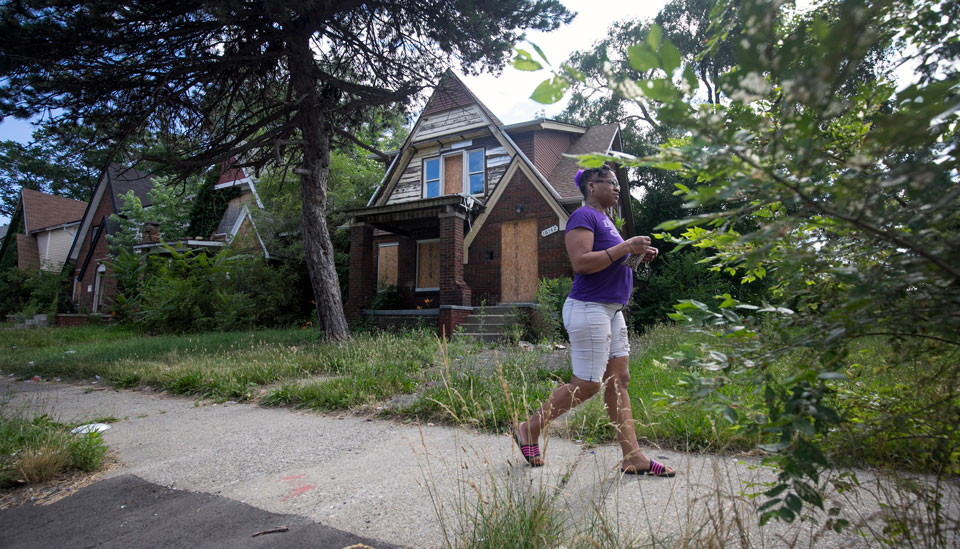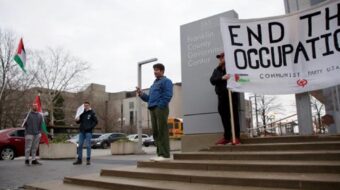
DETROIT—Beautification projects have been popping up all over the country. These projects often include cleaning up trash, planting trees and shrubbery, and repairing fences and busted plumbing, but sometimes might just be adding LED lights to a freeway.
Detroit has been no different, but with beautification often comes blight removal.
Detroit’s Mayor Mike Dugan has been eager to tackle blight in the city and has mentioned it as a priority a number of times. His administration has even created a top 100 list of “the most prominent commercial eyesores to be cleaned up.”
Some $95 million of the American Rescue Plan Act funds were allocated to address blight in the city, with another $17.5 million coming from the 2023 budget.
In some cases, the focus on blight has been beneficial to residents—for example, the Lee Plaza Hotel, which City Council approved funding to turn into affordable housing for senior citizens. Other examples include removing and stabilizing vacant homes that neighbors have been asking the city to deal with for years. Stabilization, in this sense, means that vacant homes will be rehabilitated, and Detroit residents usually get preference to purchase these homes.
However, residents have been receiving blight tickets as well. One recent example was a senior citizen who was “unable to complete necessary tasks” herself, requiring police and volunteers to get involved.
“I’m already hearing from a number of residents that for them [beautification] means more blight tickets,” said Detroit City Council Member Gabriela Santiago-Romero, who spoke to People’s World recently.
“Some residents are getting charged thousands of dollars, so far; many of them for valid reasons but the punishments are not,” added Santiago-Romero. “One person in the neighborhood has semi-trucks parked in an empty lot. They do need to be moved, but they have received tickets for up to $5,000 despite the fact that they are working on the problem. The city isn’t giving residents any leeway.”
A city like Detroit has blight all over, and it would seem that even the outside investors and corporations that are buying up properties would be impacted by this as well. However, it appears more targeted than that.
“Hot spots for gentrification and areas slated to be developed are where people are getting hit the most. Residents and small businesses have complained; they feel like the police are harassing them,” said Santiago-Romero. “I’ve talked to the Mayor about this. These people still have to go to court and potentially pay up to the thousands of dollars they’ve been ticketed for, which I think is ridiculous.”
When asked how this was impacting residents as a whole, especially long-term residents, and if it removing blight was actively forcing people out of the city, Santiago-Romero responded that it was:
“In the sense that problems are not being addressed. Many people in Southwest are moving to Lincoln Park or Downriver because they know that the city is lacking in many services. Our lack of focus on what really matters frustrates people and makes them leave; they’re not being listened to and their needs are not being prioritized.”
It would seem that beautification projects, at the very least, have a passive role in displacing residents. Indeed, addressing deteriorating homes is to the benefit of residents; however, with properties being bought up by corporations and cash-buyers—which are a mixture of investment groups, lenders, brokers, house flippers, and “iBuyers”—homes in need of repairs that are not receiving help from the city seem destined to fall into either the “blight” or “in need of stabilization” categories.
This is all the more concerning when considering that these companies buying up houses in bulk have found it to be more profitable to keep them empty rather than house people.
Only $30 million of the aforementioned ARPA funds was allocated toward housing repairs. Not investing in home repairs leaves one to wonder what happens when these homes are eventually classified as blight?
Are the residents meant to incur expensive tickets until they leave? Do current residents even have the chance to get their homes “stabilized” without selling or abandoning them?
Blight, it would appear, is not only abandoned, deteriorating buildings or property, but now a term that, in the positive sense, is tied to pleasant words like “beautification” and suggests clearing away the disgusting parts of the city.
However, it also appears to have a negative function as well: Blight removal seems to be a waiting game in order to exclude particular residents, especially those who have been here the longest or can’t keep up with both property taxes and home repairs. There doesn’t seem to be any investment in what is already here, only what is to come.
“It feels like we’re just building really beautiful sand castles which will just wash away if we don’t build up a better foundation. If we don’t give people stable employment, stable transportation—the city won’t last,” warned Santiago-Romero.












Comments